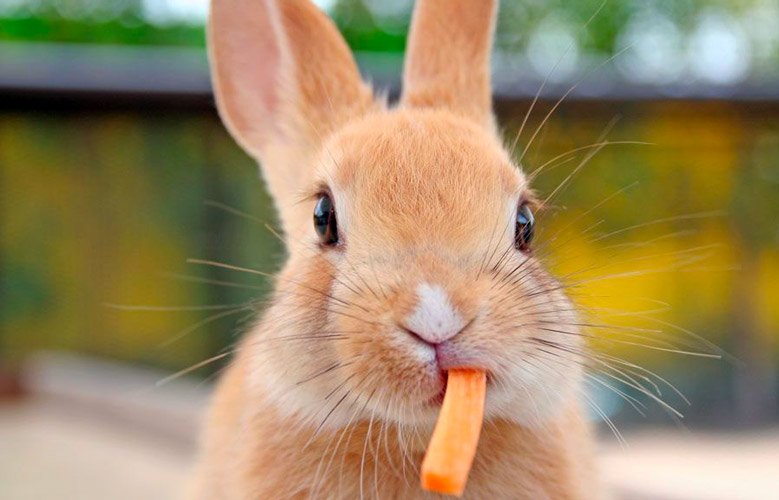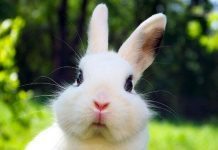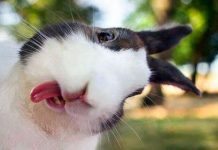
When we talk of “rabbit teeth” we immediately think of two beautiful daggers lurking on the mocking smile of Bugs Bunny; In fact, the incisive teeth of rabbits are not so obvious, though they’re larger than the other teeth. Not everyone knows that rabbit teeth play a crucial role in the rabbit feeding process and above all, that dental health is very important to their well-being. This applies to the bunnies of each breed and size , but especially for dwarf rabbits who seem to be more sensitive to the development of dental diseases; so let’s see some advice about dental care for dwarf rabbits…
How many teeth do rabbits have?
A rabbit has 28 teeth, namely: 6 incisors and 22 molars, divided by an untouched area (diastema). The molars are at the bottom of the mouth and all the teeth have long roots that penetrate deep into the jaws.
This structure allows using the incisors to cut and break down food, which will then be crushed by molars through lateral movements. All these movements not only allow the correct chewing of the food before its ingestion, but also allow the rabbit’s teeth to be filed down correctly.
All the rabbits teeth (not only the incisors!) are growing continually and it’s therefore very important that they are constantly being filed down, either when the rabbit eats or manually. It would be advisable to periodically have your rabbits teeth checked by the veterinarian in order closely monitor the molars, which they can do thanks to the oscilloscope.

Dental diseases in rabbits
The pathologies our friend’s teeth may encounter are various and are all related to dental maladjustment . This is the first and main problem, one which is very common in dwarf rabbits and may affect both the incisors and the molars with the development of lacerations, abscesses, excessive salivation and serious bone infections. When the rabbit’s teeth do not fit together in the right way, they will grow incorrectly and sometimes in strange directions, causing tears in our furry friend’s mouth.
The cause of dental disease can be hereditary, or, more commonly, feeding a predominantly wrong diet, such as seeds and / or bread. A good rabbit feed contains abrasive foods such as grass and hay to file down the rabbits teeth . Dwarf bunnies who have this disease from birth will need a visit to the vet at least once every six months, and on a periodic X-rays to check for abscesses at the roots.

Symptoms of dwarf rabbit dental disease
- Swelling at the jaws;
- Tearing: The long roots of the upper teeth can compress the tear tube, causing tearing and tearing;
- Difficulty in Eating: A rabbit that does not eat is always an important alarm bell for various diseases, not just dental. When our friend begins to give important signs of appetite, then she should be taken by the vet for check-up immediately!
- Incisive teeth too long;
- Difficulty in breathing;
- Excessive salivation;
- Projection eye: One of the consequences of malocclusive upper dental diseaseis the formation of retrobulbous abscesses. One of the first indications is the anomalous projection of the affected eye. Removal of the tooth that causes the production of pus (for abscess) and antibiotic therapy can resolve the problem; however, in the most serious cases it may require removal of the eye itself.
- Deep abscesses: If they arrive the bone because they are ill or not cared for at all, they can cause difficult infections, such as osteomyelitis, with serious consequences for our bunny.

Care and filing of the rabbit’s teeth
Intermediate intervention is sometimes required, for example by filing rabbit teeth that grow abnormally. This is an operation that is performed under total anesthesia. In the most severe cases, extraction is carried out, together with appropriate antibiotic therapy and painkillers. As for the recovery (at least for the early days), forced feeding is required depending on the severity of the surgery.
For example, removing incisors can put our friend in the condition of not being able to cut and break food; even after the surgery. For this reason you will need to consider simple steps to help them eat, like shredding (or shredding) the food before giving it to them.














